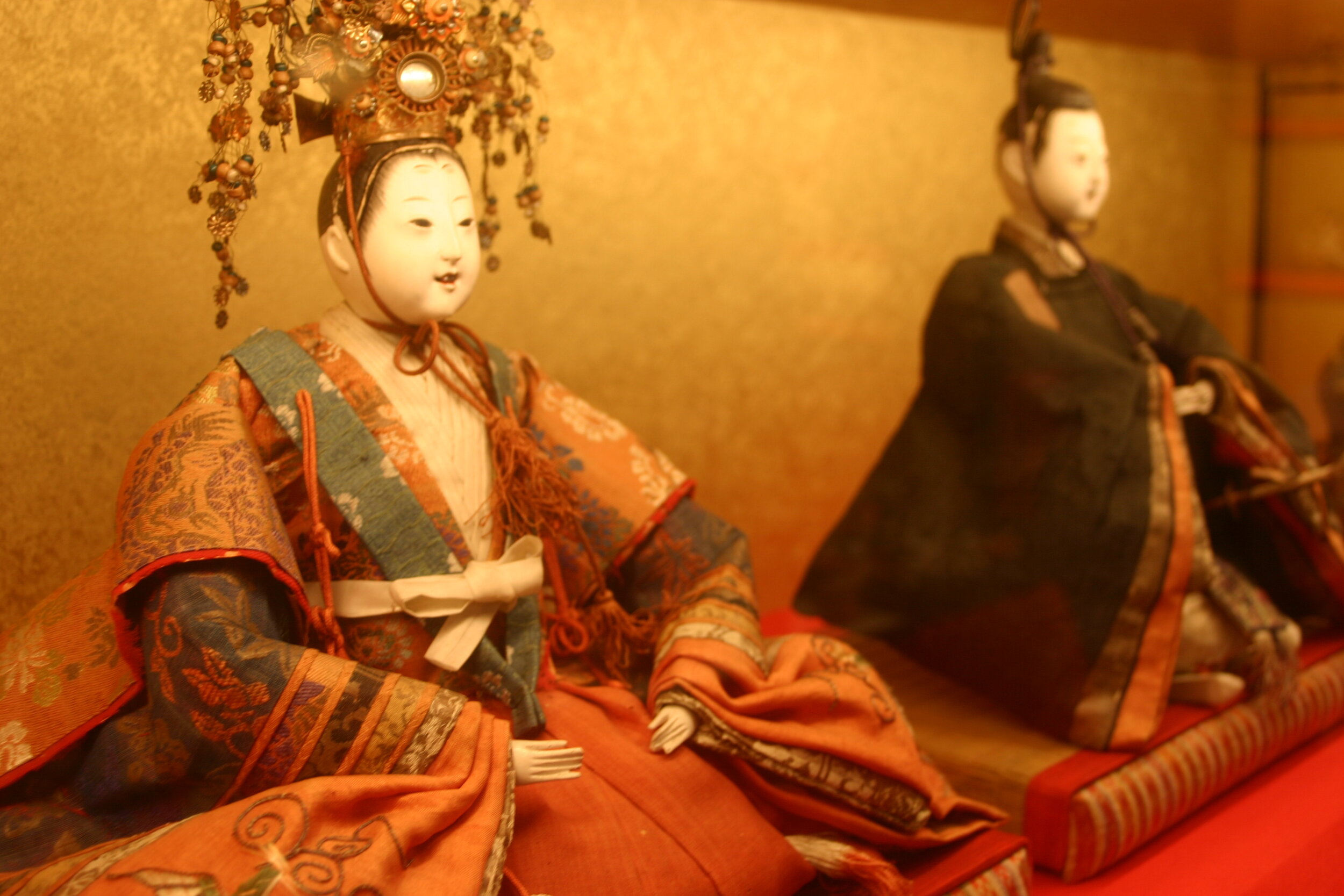Hita, a small city located in the western part of Ōita Prefecture, was in olden times a tenryo town. During the Edo Period (1603 to 1868) tenryo towns were under the direct control of the Tokugawa Shogunate and charged with keeping an eye on the happenings of outlying feudal domains. In the case of Hita, it came under the direct control of the House of Toyotomi and oversaw all of Kyūshū.
The neighborhood of Mameda Machi in the center of Hita's old town was a major hub of politics and commerce in Kyūshū during the Edo Period.
Although the area has suffered three major fires over the centuries, many of the houses still look pretty much as the did in the early Edo Period, with their white washed walls and decorative wall paintings, called kotei-e. (Minus all the souvenir shops and busloads of tourists, of course.)
The umé were in bloom throughout the town, filling the air with their sweet fragrance. Even on a day as cold as today was, just seeing these blossoms remind you that spring is around the corner, so hang in there.
At first, I thought the wall of this house had been decorated with stones. On closer inspection, however, I realized that the "stones" were actually clay bricks.
Zōri, anyone?
A shop selling wood and bamboo crafts. I was more impressed with the handwritten signs on each item than I was in the actual merchandise.
I wanted to go inside this building, but my father-in-law was eager to push on.
A close-up of the same building.
The Kunchô Sake Brewery. Built in the Taishō Era (1912–1926), the design incorporates both traditional Japanese building techniques and western influences.
March third is Girls Day in Japan, (every day is Girls' Day in my heart), a day on which parents decorate their homes with traditional Heian Period doll sets (hina ningyō) and plum blossoms and pray for the safety and happiness of their daughters. Superstition has it that your daughter's marriage will be postponed if the dolls continue to be displayed after March fourth, so people usually take the dolls out of storage in February.
Throughout Hita you'll find hina ningyō on display in private homes, restaurants, and shops during the festival.











